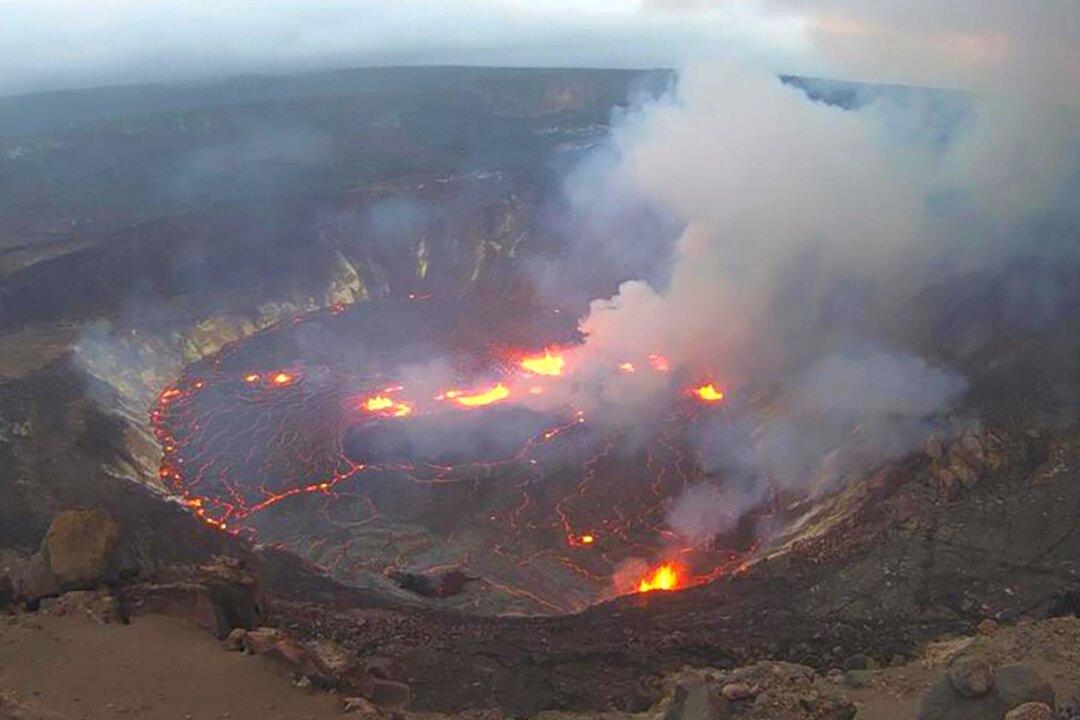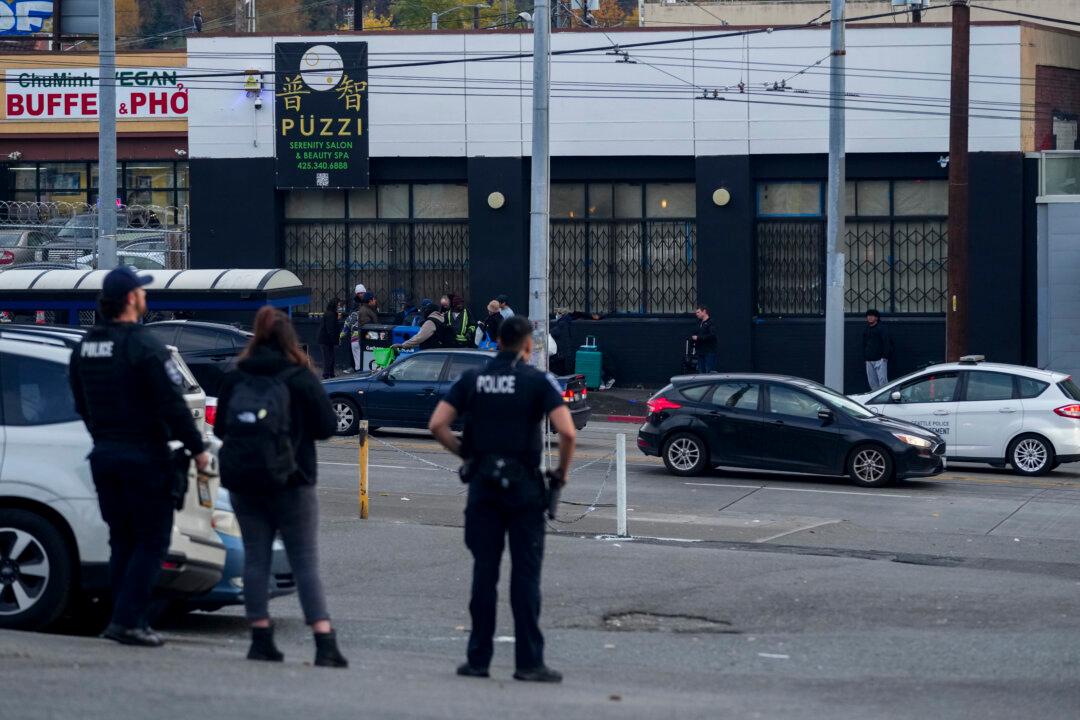The most active of five volcanoes that together form Hawaii’s Big Island was erupting in “full swing” late on Sept. 29 after a series of earthquakes and ground swelling was detected earlier that same day, the U.S. Geological Survey (USGS) confirmed.
Hawaii’s Kīlauea volcano is “in full swing,” the agency said on Twitter. “What was once a cooling lava lake is now a new fissure eruption!”





